On the lighter side of things, we ask Keith Williams, Chief Technology Officer at Capgemini Engineering, what makes him tick.

What would you describe as your most memorable achievement?
One of my most memorable achievements came last year when we partnered with the America’s Cup, the world’s oldest international sailing competition, to develop a way for TV viewers to visualise the wind over the race area – making the invisible, visible!
Drawing on our expertise in technology, engineering, data and design, we used LiDAR (light detection and ranging), sensor fusion and scientific computation to reveal the wind in augmented reality (AR) and virtual reality (VR) graphics. The technology, WindSight IQ, achieved a first in the history of sailing and broadcast television, and I couldn’t be prouder of the team who made it possible in just seven months!
What first made you think of a career in technology?
Early on I became interested in safety critical systems. These are physical systems with computing as a key element, where failure can result in injury or loss of life. For example, it might be radiotherapy machines, railway signalling, air traffic control or helicopter landing systems.
I loved these projects because of the need of uncompromising quality and engineering precision to ensure maximum reliability and safety. I wanted to work on the most extreme engineering problems, so that’s where I gravitated.
What changes to your job role have you seen in the last year and how do you see these developing in the next 12 months?
Of course, AI has changed all our jobs in the last 12 months. But at the same time, it’s important to understand that AI is not new. In my first ever project back in 1994 I was using AI based image recognition techniques to process cervical smears using functional programming. That is still a trendy combination today.
So, what has changed? The ChatGPT moment was important because it made AI and Gen AI accessible to your average person on the street and it put AI on the radar of CXOs. The current noise around AI is partly justified because it’s effectively solved the problem of communicating with AI. For the first time, it’s enabled a high level of interaction between people and machines.
However, from an engineering standpoint, AI on its own is still ultimately making educated guesses, which inherently limits its use in applications that require absolute correctness. In engineering we often need to combine technologies like Gen AI with other more deterministic models and approaches.
What style of management philosophy do you employ in your current position?
I take the ‘shut up and listen’ approach to management. To achieve the results, you want from your team, you need to manage reality, and for that you need to establish reality. Technology leaders need to be obsessive about attaining an accurate picture of what is actually going on and that involves listening.
Related to that is focusing on details. You need to see the big picture to see where you’re going, but just as important is an ability to go deep into the detail to see how that strategy is being implemented on the ground.
If you could go back and change one career decision, what would it be?
I view my career as being a wonderful mosaic of successes and failures; with hopefully more successes than failures. It’s been an adventure, and like any adventure you’re going to have to take risks. But I wouldn’t go back and change anything, even if I could.
Another philosophy for me is I’ve always put my hand up. It means you can find yourself in some difficult situations, but rarely does it turn out to be the wrong decision. If something is going wrong, putting yourself at the forefront of the battlefield is always the right thing to do.
What do you think has emerged as the technology trend of this year and why?
There is always a new technology on the hype curve. To me, the job of a technology leader is to see through it. Then you can establish the long-term risks and benefits.
For example, look at AI, if you ignore the hype and buzz words, something important is really happening – something as important as the Internet, something our engineering clients need to take a strategic approach to.
But the situation is complex for many clients, the data might be siloed, the use of AI restricted by standards, high levels of investment in existing tailored engineering tool chains and so on. Such topics take time to address and necessarily slow down adoption in many engineering environments – phrases like ‘this year is all about agentic AI’ are nonsense in my opinion and result in misallocation of capital. You see the same in many technological domains, for example a new battery chemistry gets announced with superior performance, ok great, but is everyone suddenly going to write-off billions from their balance sheet to build new factories to produce it – clearly not.
How do you deal with stress and unwind outside the office?
Mountain biking. I love getting muddy, wet and cold. I love the risk element and the fact that, at any moment, I could fall off and break my arm. Mountain biking requires a lot of balance and complete focus, you’re always learning, and it gets you out into the fresh air. I enjoy the rawness of it, and I’d recommend it to everyone at any age.
What do you currently identify as the major areas of investment in your industry?
It’s all about making sure the fundamentals are in place. Yes, it can be dull. But if an enterprise CIO wants to extract maximum value from AI, for example, they can’t do that unless they have the right data architecture in place. With engineering, it’s the same story. We want to digitise R&D, and we want to gain more advantages from simulation, but we have to make sure the fundamentals are in place first.
What are the region-specific challenges you encounter in your role?
At CES this year, the issue of sovereignty was a hot topic, and that was even before recent geopolitical developments. We’ve seen a big drive for sovereignty in many of our core industries, be it semiconductors or telecommunications and that will certainly continue. This was backed up by a recent report from the Capgemini Research Institute which assessed investment priorities for 2025. It found that globally, seven in 10 executives are concerned about the impact of rising tariffs and bilateral trade disputes on their organisation’s competitiveness. As a result, almost two-thirds now confirm that ‘friendshoring’ will represent a significant part of their organisation’s sourcing and production strategies in 2025, in order to reinforce their supply chains.
What changes to your job role have you seen in the last year and how do you see these developing in the coming months?
In the current environment, there is a big focus on value for money. As a result, there is a need for technology leaders to spend time explaining what a technology can and can’t do to ensure investments are wisely made, especially with AI. Once you have worked out what reasonable expectations are for a technology, you can plan realistic investment projects that have realistic returns in terms of value creation over realistic timeframes. As leaders we need to be demanding for sure, but also credible.



